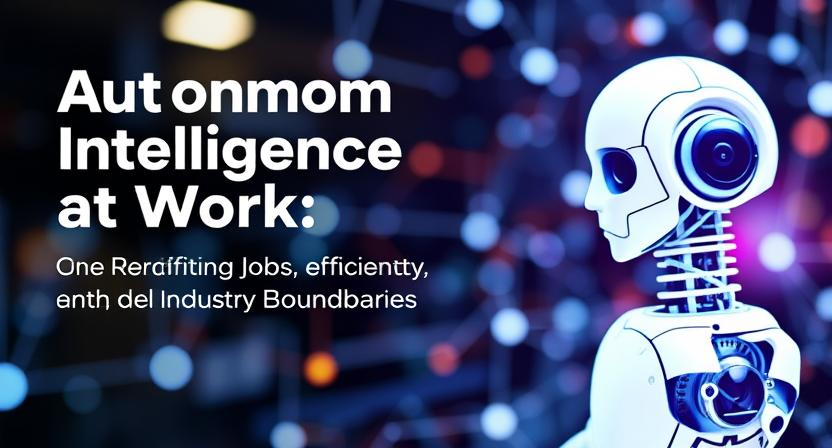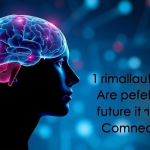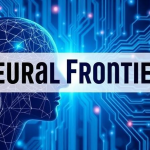The world of work is undergoing a transformation unlike anything we’ve seen in the digital age. At the core of this disruption is Agentic AI—a new class of artificial intelligence systems capable of setting goals, making decisions, and acting independently within dynamic environments. Unlike traditional AI, which follows rigid instructions or responds only to direct input, agentic AI introduces autonomy, adaptability, and context-awareness into the heart of machines. This shift marks the dawn of a new era: not just automation, but agency.
From logistics and customer service to finance and healthcare, agentic AI is already reshaping workflows, redefining job roles, and challenging the boundaries of what machines can do. And this is just the beginning.
What Is Agentic AI?
Agentic AI refers to artificial intelligence systems that exhibit a degree of self-direction. These systems are not just tools or passive responders—they are goal-driven entities that can reason, plan, learn from experience, and act proactively in pursuit of objectives. Inspired by cognitive science and artificial general intelligence (AGI) frameworks, agentic AI combines reinforcement learning, planning algorithms, and large language models to simulate intelligent agency.
A practical example would be an AI system managing warehouse operations. Instead of being told precisely what to do at every step, an agentic system might independently prioritize tasks, reroute robots in real-time based on traffic, and even negotiate with suppliers when delays arise—without direct human intervention.
Real-World Applications Already in Motion
Several sectors are already adopting agentic AI in practical ways:
1. Customer Support with Conversational Agents
Companies are moving beyond simple chatbots. Agentic AI systems can now manage multi-turn conversations, remember context, escalate issues smartly, and even follow up after a customer interaction—behaviors that closely mimic human agents.
2. Autonomous Supply Chain Management
Retail giants like Amazon are experimenting with agentic AI to predict stock needs, reroute shipments, and rebalance supply chains dynamically. These AI agents constantly assess the environment, adapt to disruptions, and make decisions on the fly.
3. Financial Advisory Services
AI-driven robo-advisors now employ agentic models that adjust investment strategies proactively based on market conditions, news sentiment, and even user behavior. Instead of waiting for human input, these systems nudge clients toward better decisions.
4. Healthcare Workflow Optimization
Hospitals are piloting intelligent systems that can independently schedule appointments, assign resources, monitor patient conditions, and flag anomalies in electronic health records without needing human oversight at each step.
How This Redefines Human Roles
With AI taking on greater autonomy, the nature of human labor is evolving. The most immediate shift is the rise of the “AI-augmented worker.” Rather than replacing humans outright, agentic AI enhances productivity by offloading routine tasks, enabling humans to focus on creativity, strategy, and empathy-driven roles.
However, this transition also poses challenges:
- Skill Displacement: Traditional administrative and repetitive roles may become obsolete, pushing workers to re-skill or shift to AI oversight and ethical management.
- Trust and Transparency: As AI agents operate with more independence, humans must understand how decisions are made. This calls for greater emphasis on explainable AI (XAI).
- Responsibility and Ethics: If an agentic AI system makes a flawed decision—say, denying a loan or mismanaging a medical alert—who is accountable?
The Efficiency Paradox: Speed vs. Oversight
One of the most intriguing aspects of agentic AI is its ability to operate faster and more efficiently than human-controlled systems. But this advantage brings a paradox: the faster these agents act, the harder it becomes for humans to oversee them in real time. This raises new questions:
- Should AI systems be allowed to act autonomously without immediate human review?
- How do we balance speed with accountability?
- Can we implement “kill switches” or constraints that don’t undermine the benefits of autonomy?
Leading researchers are now advocating for hybrid governance models, where human agents and AI systems form collaborative networks—sharing decisions, validating each other’s actions, and evolving together.
Looking Ahead: Where Agentic AI Is Headed
The current generation of agentic AI is impressive, but it’s only scratching the surface. The next frontier lies in:
1. Multi-Agent Collaboration
Future AI agents won’t operate in isolation. Swarms of intelligent agents will coordinate complex operations—like managing entire city infrastructures, executing large-scale scientific simulations, or handling global logistics networks.
2. Embedded Ethics and Values
Tomorrow’s agentic AI will be expected to act according to ethical principles and social values. We are beginning to see the integration of moral reasoning frameworks into AI architectures, ensuring actions align with human well-being.
3. Personalized Autonomous Assistants
AI agents tailored to individual users could become personal coaches, financial planners, or wellness advisors. These assistants would learn your preferences, anticipate your needs, and act on your behalf across digital environments.
4. Self-Evolving Systems
Agentic AI systems may soon possess the ability to revise their own goals or improve their decision-making structures through metacognition and self-modification—blurring the line between programmed intelligence and adaptive consciousness.
Final Thoughts: A New Social Contract
As agentic AI systems become more prevalent, society will need to renegotiate its understanding of work, intelligence, and agency. We are entering an age where machines are not just tools but collaborators—entities that can think, decide, and act alongside us.
Rather than fearing this shift, we must shape it—through thoughtful design, ethical frameworks, inclusive policymaking, and widespread education. Agentic AI is not just about automating work. It’s about redefining what work means in an age where intelligence itself becomes a shared asset between humans and machines.
In this new reality, the smartest move isn’t resisting change—but co-evolving with it.






Leave a Reply